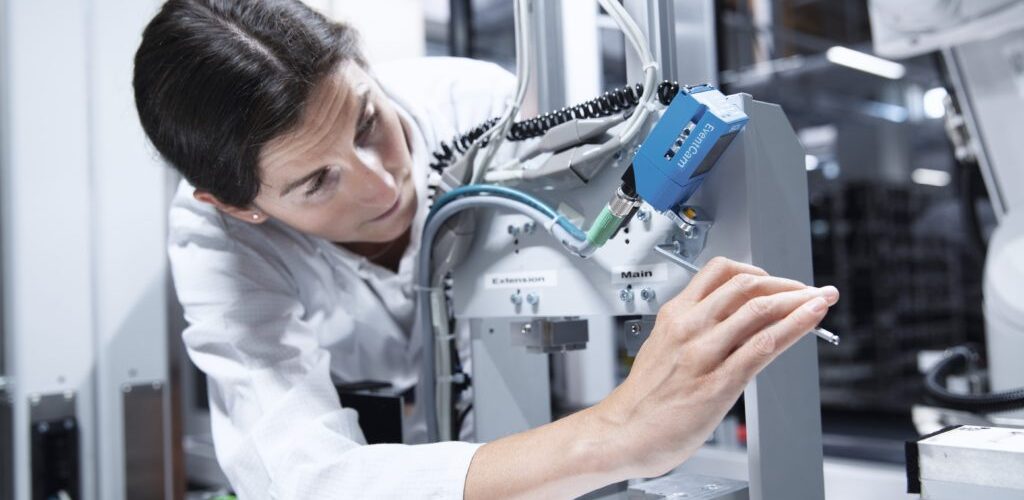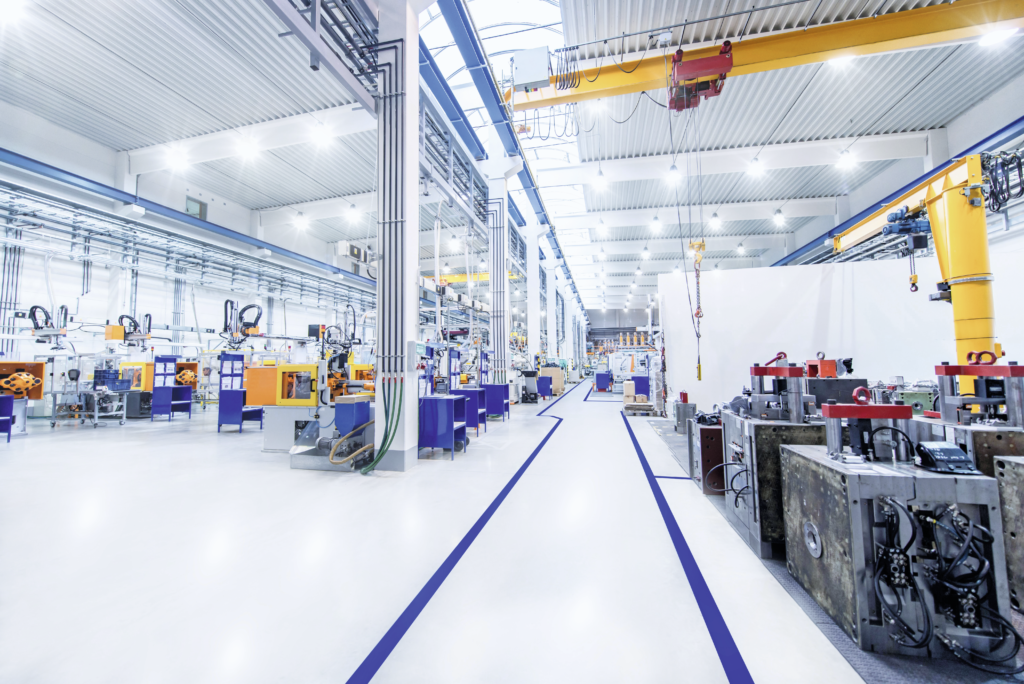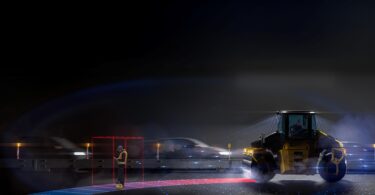Are you ready for the factory of the future? Look no further than SICK’s factory in Freiburg, Germany where Industry 4.0 comes to life. State-of-the-art sensor solutions have been implemented to improve manufacturing processes and automate production on SICK sensors.
In stark contrast to rigid assembly lines of normal factories, SICK’s smart factory has twelve fully-automated production technology modules, nine manual workstations, and a hybrid workstation inside the production facility. These are often referred to as “automation islands” that have drastically changed the landscape of manufacturing processes.
Industry 4.0 Production
From the start of the production process to the end product, SICK’s innovative approach to sensor automation is leading the charge to reach Industry 4.0’s full potential. To start a production order at SICK’s Freiburg factory, the desired product version is configured online in accordance with the customer’s requirements.
The production process allows the manufacturing steps to vary as required, and the data collected to create the product even includes which module is required during production.
“We currently manufacture five product families here, 12 are planned for the future, and over 500,000 product variants are conceivable,” said Joachim Schultis, Head of Operations for Photoelectric Sensors & Fibers. “With this type of production, there are virtually no limits to the variances. This enables us to respond extremely well to customer requirements, which are becoming increasingly diverse and individual. We even manufacture small quantities on demand – and at an affordable price for our clients.”
This combination of characteristic properties and values is provided via SICK’s own system and the production processes are controlled accordingly. All of the contributing elements – the sensors, machines, and people – are organized remotely, networked, and are in constant communication with each other.
In addition to this high level of organization, there is tremendous resource efficiency. With the help of the software, orders are prioritized and the modules and employees are optimally deployed. This also makes just-in-time production possible.
Automated quality control and management
Each module has its own automated quality control based on process data and defined limits. The integrated automated optical inspection (AOI) checks the camera system step and ejects faulty modules (i.e. those that are not within the specified limits). Once the entire process is complete, the module passes the information to the production control system and directs the part to the next station.
Material transport is handled by automated guided vehicle systems that receive their transport orders via the network. This supports flexible production by optimally linking the production steps of the product.
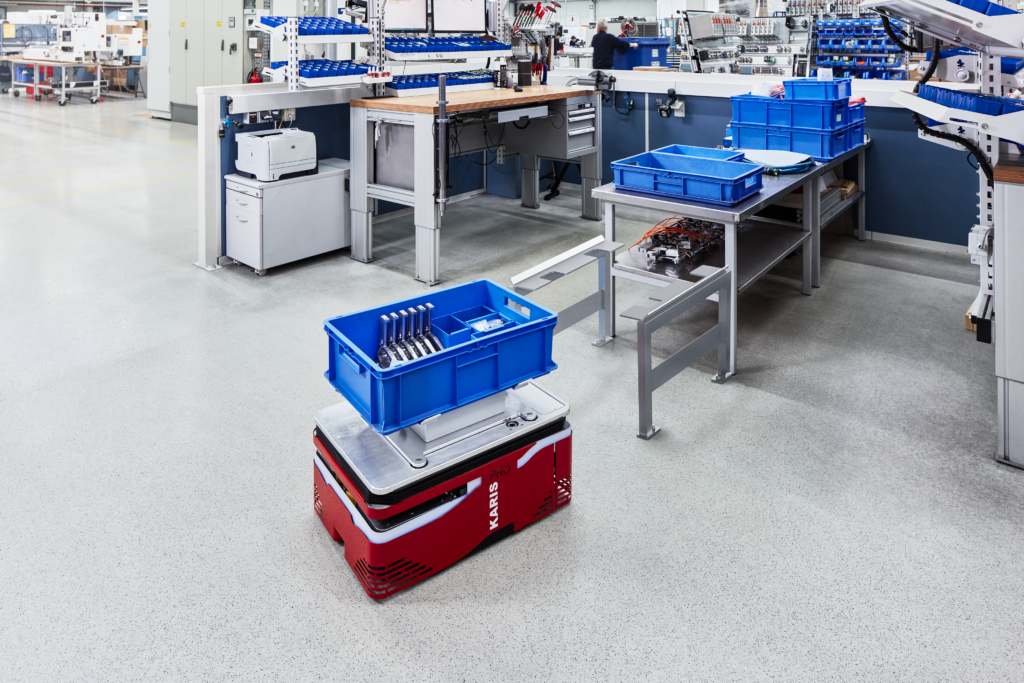
The current status of the technology modules, production or various key figures can be viewed in real-time via dashboard. Process and sensor data is uploaded to the cloud, enabling predictive maintenance and ensuring high machine availability.
All information generated during the production of SICK sensors is stored in a Big Data Cloud, fully documented and linked to the serial number of the product. The position of a certain product or the information about its material composition is only a push of a button away. If a product is defective, the production history linked to the serial number helps to find out whether there were any discrepancies in production.
Human and Machines Working Hand-in-Hand
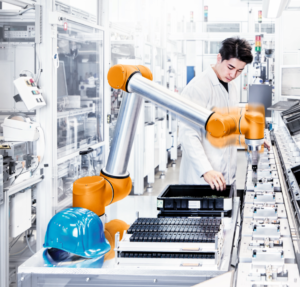
The factory of the future is a place where man and machine act in a common workspace and mutually enrich each other – the learning organization becomes more holistic and involves machines to an increasing degree. Although the automation of processes is a desirable goal, very complex work steps still require human intelligence and skills.
“In our production facility in Freiburg, processes are carried out by employees when it comes to complex joining processes for sensitive parts,” Schultis said. “For example, it takes a sure instinct to place the sensitive glass lenses in the sensor housing. In view of the high development costs, automating this step makes no sense today.”
SICK recognized the huge potential of Industry 4.0 very early on and intends to explore its full potential at its Freiburg production facility. Two years of planning and implementation and a high investment sum flowed into this major project, with SICK once again taking on a pioneering role.
This not only relates to the processes in the digitally networked factory, but also to the ongoing optimization and marketing of SICK products, solutions, and services. After all, sensors are the foundation of any Industry 4.0 scenario as data suppliers for the control systems.
“We only install our own sensors and sensor systems in our plants. They have to be able to demonstrate what they are capable of here under real conditions,” Schultis said. “This provides us with important insights into how they work, shows us where we can still make improvements, and provides us with inspiration for new developments.”


